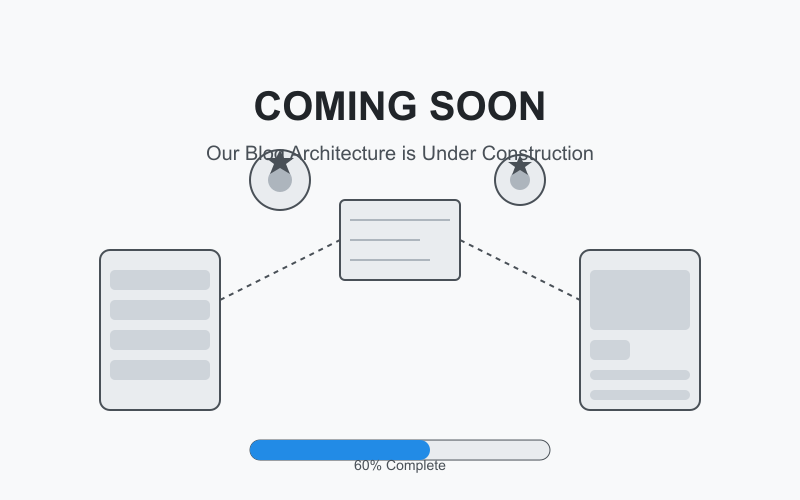🌇 The LEGO City Dream
On a hot afternoon, Prisha, a wide-eyed 12-year-old with big ambitions, had invited her friends over.
“Let’s create a LEGO city!” she cried out.
“With roads and parks!” cried out Arijay.
“And rocket launchpads!” boomed Nimisha.
They took out their LEGO box filled with LEGO bricks.
They constructed houses, cars, shops, and even a rollercoaster. By the end of the evening, the table was filled with their dream city.
“Let’s call it. Friendopia!” Prisha smiled.
But the excitement was short-lived.
😟 The Great LEGO Mess
The next day, the LEGO city was in chaos.
- The rollercoaster was not getting attached to the base.
- One of the houses collapsed when they added a roof to it.
- The roads were not in line.
- Nobody was able to fix what the others had created.
Arijay looked around. “Why is everything collapsing?”
Prisha grumbled. “It’s a disaster now.”
Someone coughed behind them then.
He was Mr. Kohli, Prisha’s dad—a software architect who constructed actual software with real code.
He smiled, looking at the LEGO chaos. “Looks like you’ve discovered a builder’s biggest problem.”
Prisha inquired, “What are you saying?”
You all created wonderful things,” he said, “but no one used the same plan. There was no system of consistency. You had no idea how the pieces were going to fit or be added.”
He sat and took out his notebook.
In my world, developers consistently hit the same problems, we use something called Design Patterns.
🧠 What Are Design Patterns?
In the world of software (and LEGO), design patterns solve recurring problems—whether you’re dealing with object creation, communication between parts, or how components are organized.
Mr. Kohli said, “Design Patterns are like intelligent building techniques. They enable you to construct repeated solutions to problems, not only in LEGO but also in real software!”
Design Patterns are tried and proven solutions to repeated problems. They are not recipes, but rather blueprints.
When we develop, we apply design patterns to make building code simple to:
- Understand
- Fix
- Reuse over and over.
In software development (and LEGO), design patterns address recurring issues, regardless of whether you’re dealing with object construction, component interaction, or structural organization.
📖 Where Did Design Patterns Come From?
The design pattern concept was first invented in architecture by Christopher Alexander in the 1970s. He believed that cities and buildings should be governed by repeatable patterns of good living.
Spurred on by this, four amiable software developers—Erich Gamma, Richard Helm, Ralph Johnson, and John Vlissides(also known as the Gang of Four, or GoF)—wrote a book in 1994 entitled “Design Patterns: Elements of Reusable Object-Oriented Software.”
It presented 23 design patterns, grouped in three categories, and changed how we think about programming problem-solving.
🔧 How Design Patterns Help LEGO Builders (and Programmers)
Prisha leaned in. “So, if we apply these patterns… our city won’t fall apart?”
“Exactly!” replied Mr. Kohli. “You’ll construct faster, brighter, and all at once.”
Design patterns assist in numerous ways:
- Consistency: We all construct in the same way, cutting down on misunderstandings.
- Reusability: Bricks (or code) can be reused over and over again.
- Scalability: Need to construct a 10-story building? Patterns assist you in scaling up without having to begin again.
- Communication: If a contractor says, “Let’s use the Builder Pattern,” everyone will know.
👍 Pros and 👎 Cons of Design Patterns
✅ Pros:
- Do things the right way.
- Enable you to rush ahead and solve problems
- Give you a common vocabulary
- Make projects scale better.
- Best practices are encouraged.
- Provides flexibility and readability to the code
- Enable teams to work more effectively.
❌ Cons:
- There are more than trivial problems that are capable of being handled.
- Abuse brings too much complexity into the picture unnecessarily.
- It’s not a silver bullet—just a tool in the toolbox.
Mr. Kohli said, “Use patterns when they make life easier, not harder!“
Remember: If you use them to do little, unimportant things, they may complicate your work rather than simplify it. Patterns are most useful when you are making something large or public.
🎯 When (and When Not) to Use Design Patterns
Use them when:
- You’re solving a problem you’ve seen before.
- Your project needs flexibility, scalability, or clear architecture.
- You’re working in a team and need a shared language.
Avoid them when:
- You’re solving a unique or simple problem.
- The pattern adds complexity without a clear benefit.
- You don’t fully understand the pattern—copy-pasting blindly is dangerous!
Professor Patternstein’s rule: “Understand the problem first. Then pick the pattern, not the other way around.”
Mr. Kohli explained, “A LEGO crane is cool, but you don’t need it to build a tiny doghouse. 🐶”
🧩 The 3 Main Categories of Design Patterns
Mr. Kohli drew three boxes:
Creational 🛠️
These assist you with creating things correctly.
These patterns deal with object creation. Examples: Singleton, Factory, Builder, Prototype.
Structural 🧱
These enable you to compose things neatly.
These patterns inform you of how various pieces are put together. Examples: Adapter, Composite, Decorator and Facade.
Behavioral Patterns 🤝
These assist pieces communicate with one another.
These patterns govern how objects communicate with each other. Examples: Observer, Strategy, Command, State.
Each one is used to address a certain kind of problem. Just like how LEGO uses various pieces for varying tasks.
🚀 What’s Next?
Mr. Kohli smiled. “Tomorrow, I’ll teach you the Builder Pattern—and we’ll rebuild your tallest tower, the right way.”
Prisha looked around at her friends. “We’re not just playing anymore. We’re becoming real builders.”
They high-fived.
Friendopia was about to get a serious upgrade.
💡 Coming Next: The Builder Pattern
Stay tuned for Episode 2: “The Tower That Didn’t Fall”—and learn how the Builder Pattern can change the way you think about building forever.


